Northern NSW
Surf
18 June 2025
New South Wales (NSW) in the southeast of Australia is the most populated state in the country, largely down to the fact it’s home to the most populated city in the country, Sydney.
Whilst there are many road trip missions worthy of the trip in Australia, driving the east coast along the legendary 800-ish kilometres of Pacific Highway between Sydney and Gold Coast is a world-famous surf pilgrimage.
The northern segment is a particular highlight for ocean enthusiasts, providing hundreds of kilometres of subtropical coastline with idyllic, rural surfing landscapes. There are countless long golden sand beaches, verdant headlands with rocky point breaks, clear blue seas with warm water and swell year-round. There are options for relaxed, off-grid coastal surf towns or buzzing hubs of the global surf community.
Due to this, you can find older locals getting their daily fix, plus some of the highest performance surfing on the planet, and everything in between. A trip here could last for two weeks or two years, with enough to keep anyone stoked.
Whilst travelling to the east coast in search of surf is a very well-trodden path, I am doing this a little differently, and will base myself in a small, low-key coastal town, away from the crowds. I’m here for a week-long surf retreat with Kale Brock, a surfer, coach and filmaker from Australia. I have spent many hours watching his informative surf tutorial videos, looking for tips to progress my surfing. Now I’ve got a week with him to cram as much learning in as possible.
The heat of summer in Australia would certainly be a struggle for me, combined with super busy beaches and thousands of surfers, it’s not an ideal place to increase your wave count. But during winter, Australia grows in appeal to me. The pleasant temperatures and consistent swell make for an ideal surf trip, with air temps of low twenties and water temps of around 18 degrees, plus little to no crowds and the ability to skip some of the winter in New Zealand, it was a very welcome change. I was buzzing to get in the water, the only lingering concern was the potential shark encounter.
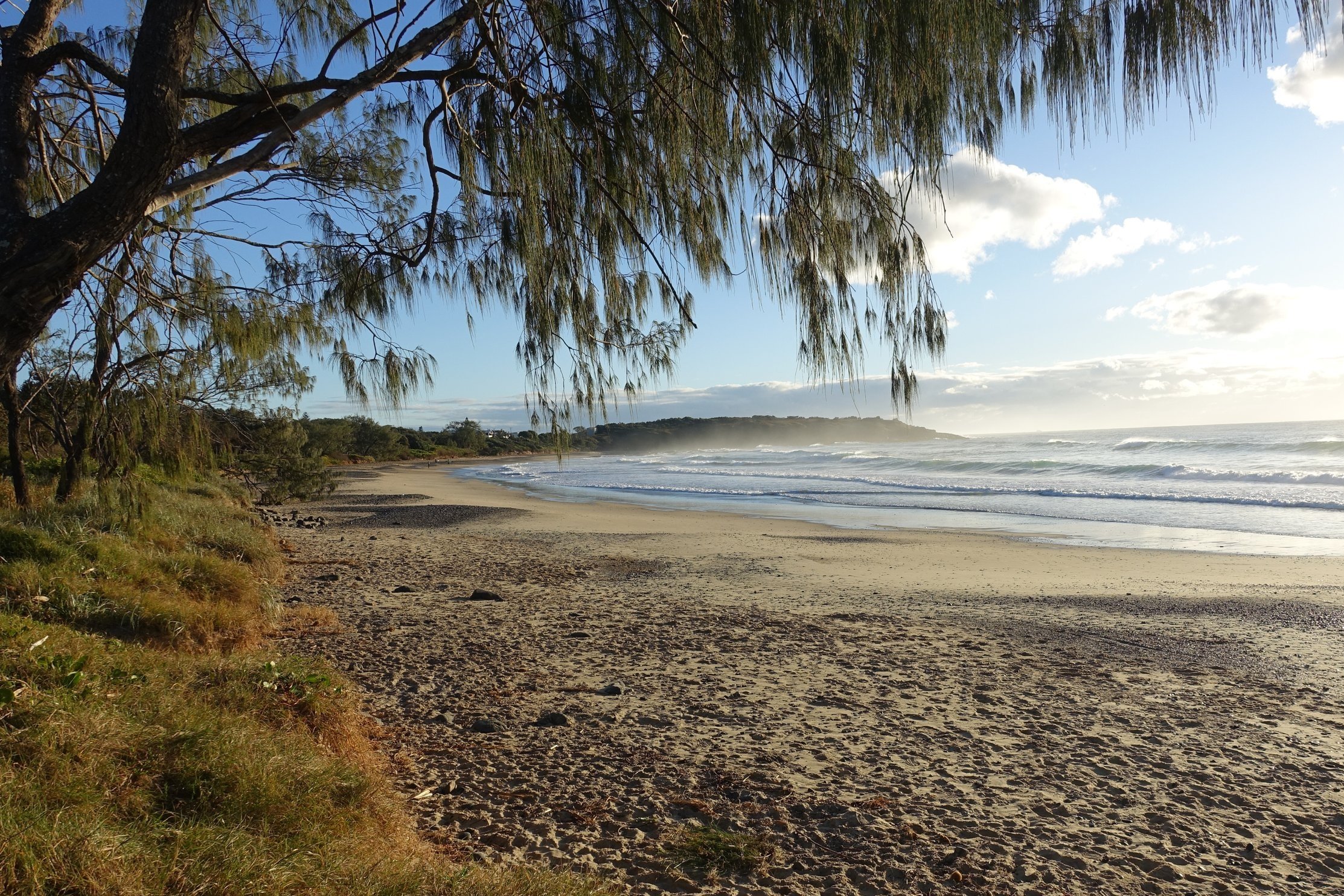


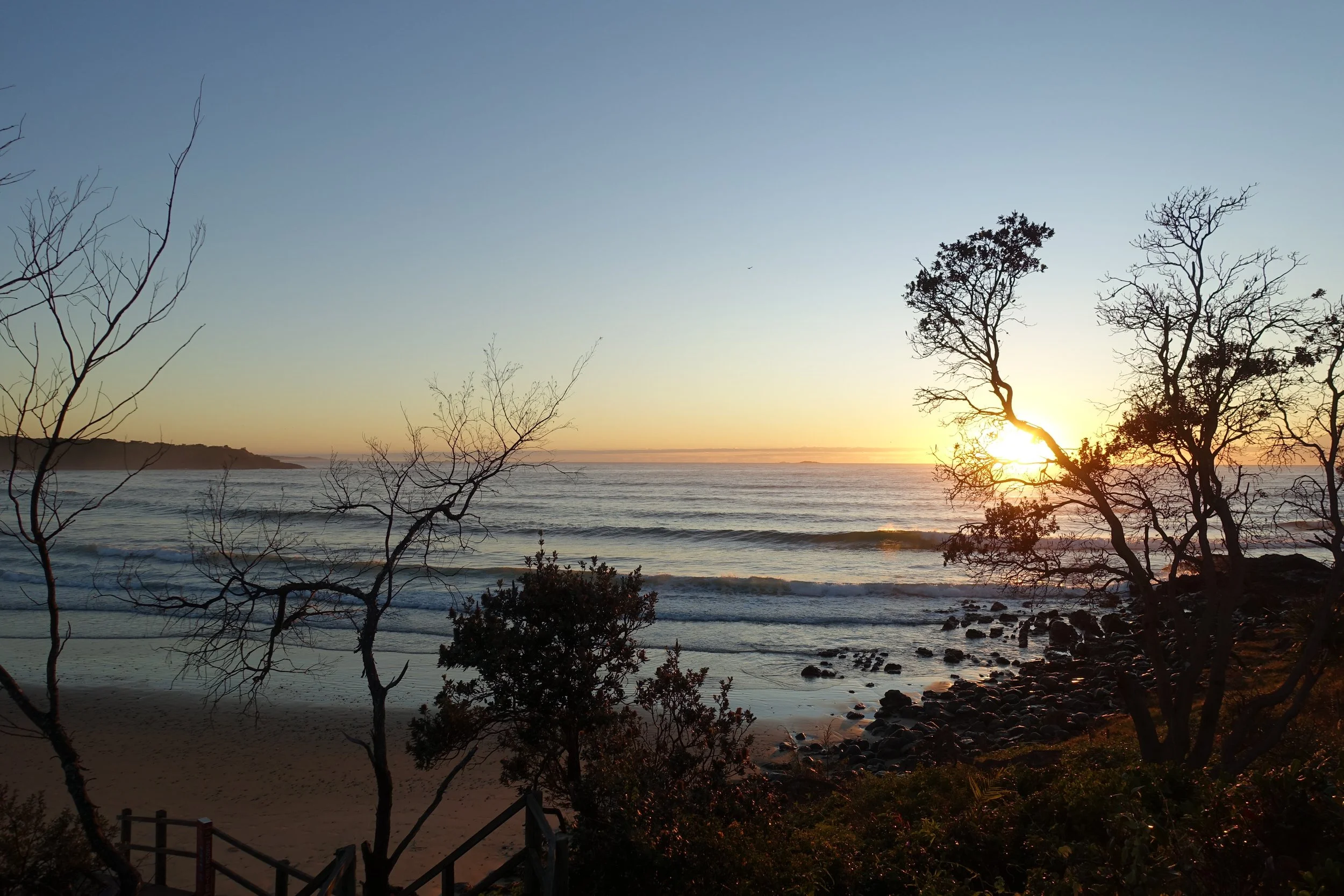

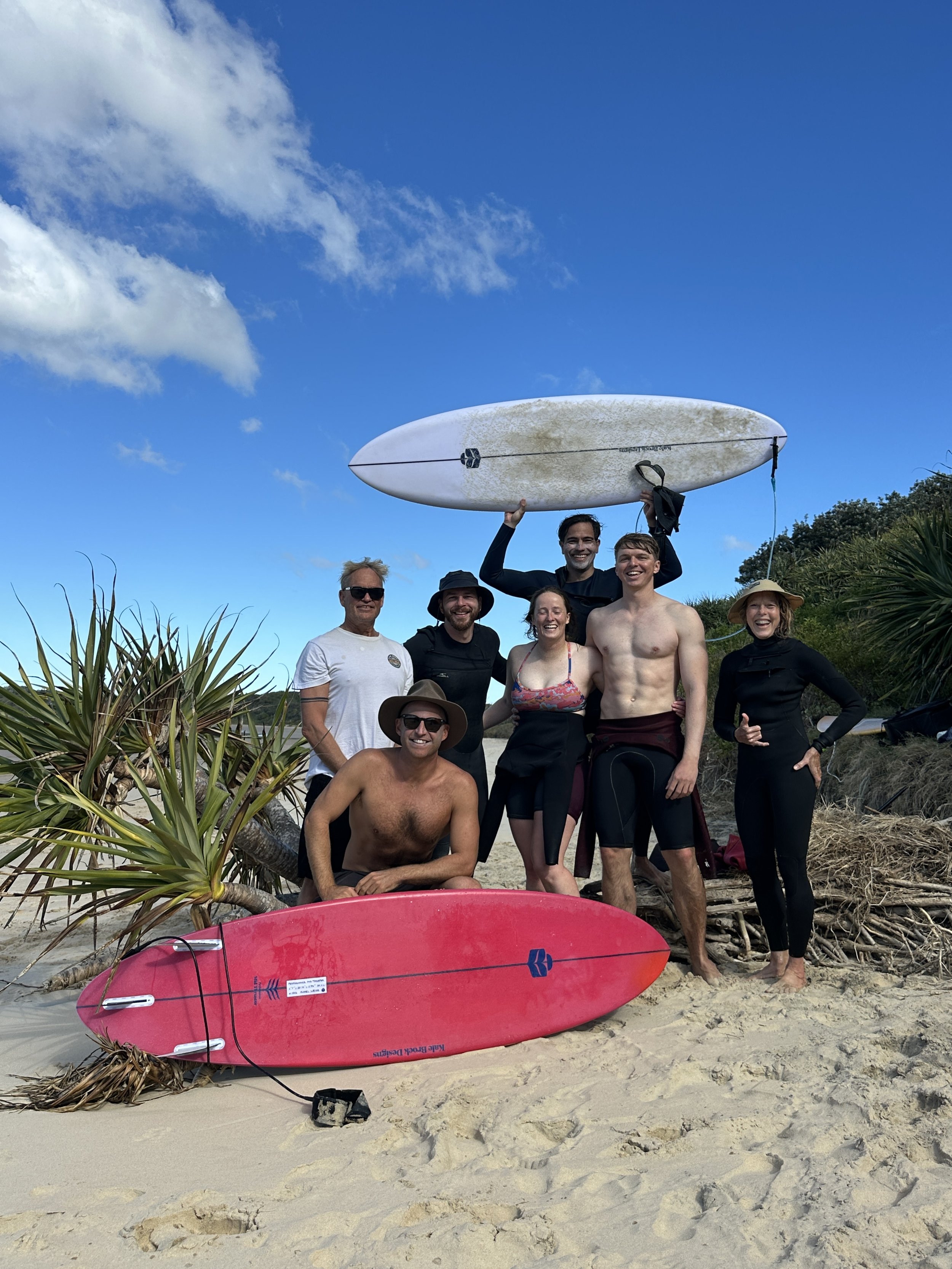

My trip started with a four hour flight across the Tasman from Wellington to Brisbane, followed by a three hour drive south down the coast on the Pacific Highway. From the house we were staying in, we could walk down to the beach or round the corner to the other beach or the points, there were any number of options. We found a few locals here and there, but more often than not, we had waves to ourselves. We saw heaps of whales breaching as they migrated north up the coastline for warmer water. Kangaroos would stroll into the back garden, sea turtles came to check us out in the water, plus we shared waves with dolphins! My initial concern over potential sharks when I saw a fin quickly changed as the playful nature of dolphins became clear and they jumped through and on the waves next to us. Everyone in the water was grinning ear to ear in disbelief that the dolphins were so close.
Days were simple and focused on maximising surf. We’d walk down to the beach or nearby point for a 2-3 hour morning surf, have lunch, and repeat. Evening video analysis of my surfing brought lots of progress throughout the week.
Team photos




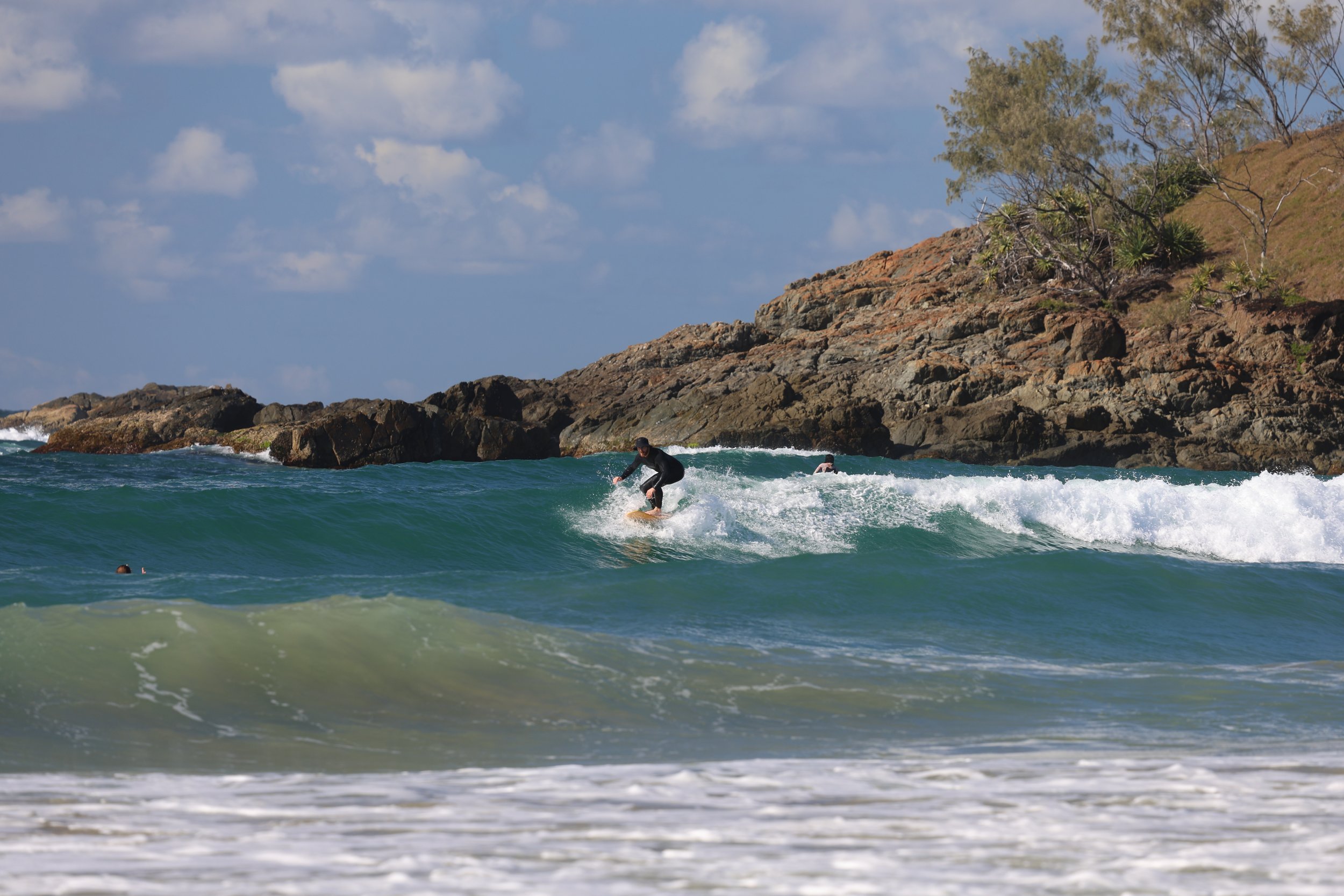
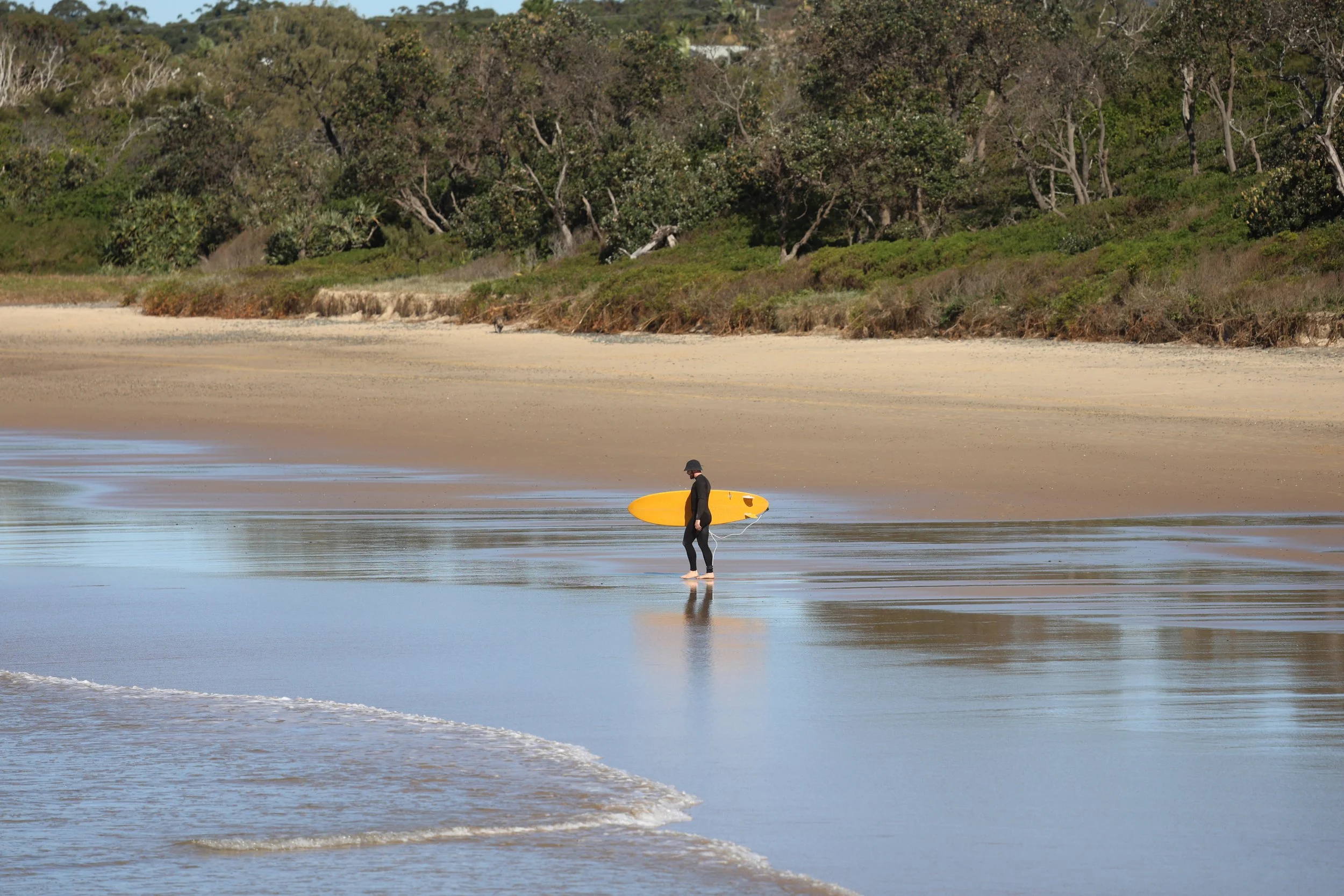

Post surf camp, with a huge smile on my face and tired shoulders, I headed to Byron Bay for a few days to chill out before continuing north back to Brisbane and flying home.
Byron is the quintessential Australian surf spot. I caught up on calories, browsed surf shops, went to gigs, had back massages and napped in the afternoon sun. Cape Byron is the easternmost point in Australia; as a result it captures every ounce of swell going, including intermittent northwest swells and cyclone swells from the Coral Sea, and more consistent south swells from the Tasman Sea, so the surf culture is strong.
Although Byron attracts the crowds, with that you get all the super modern surf shops, cafes, bars and cool people to hang out with. I also got to pit stop in several world-renowned surf towns of Sunshine Coast, Burleigh Heads, and Tweed Heads. The surf industry in Australia blew my mind. The scale of the retail spaces, and how normalised and mainstream the sport is, was cool to see.
All in all, a super successful trip - scored waves, progressed my learning, probably doubled my total time on waves, got within inches of dolphins in the water, and had heaps of fun. Until next time, Australia…
Team photos

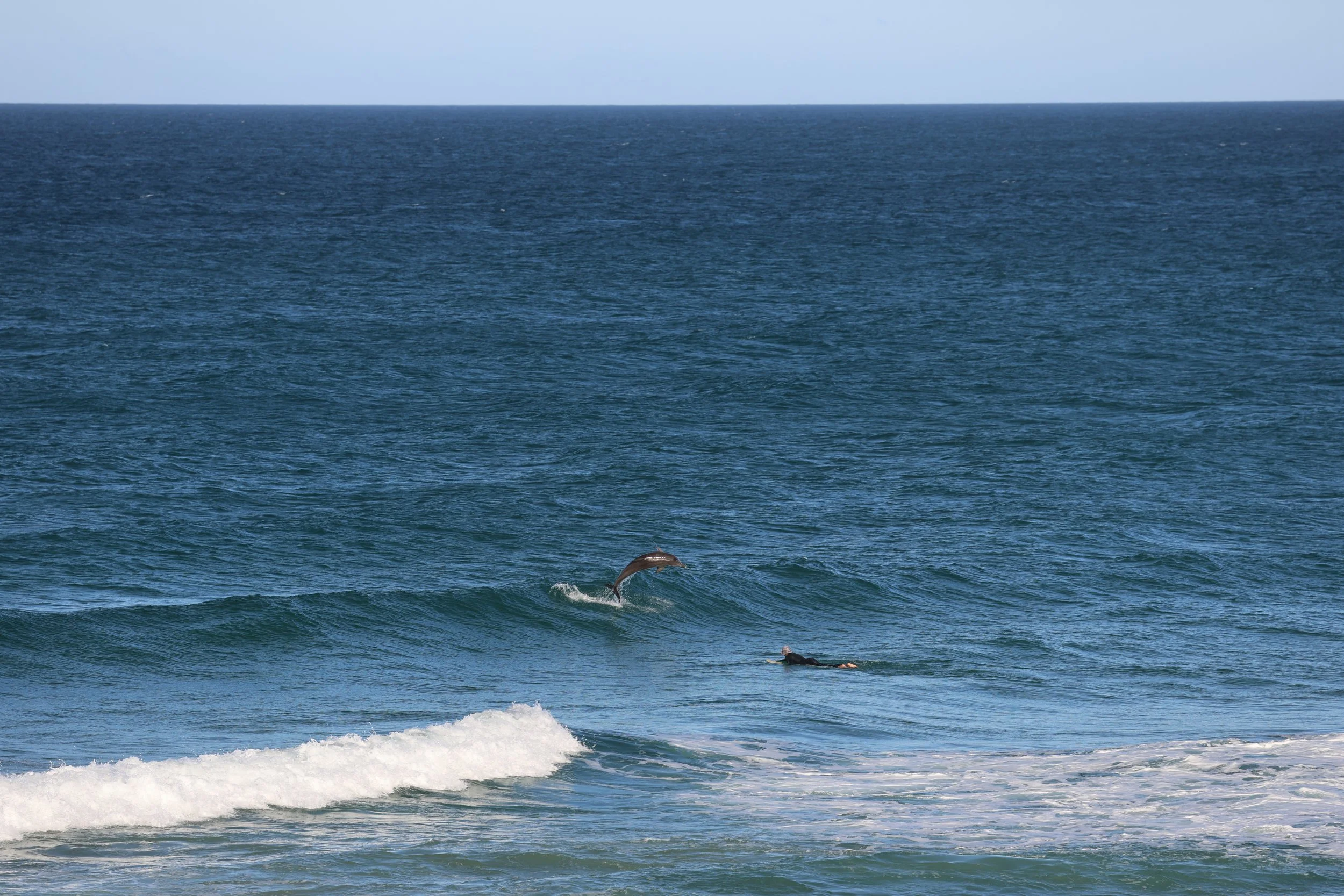
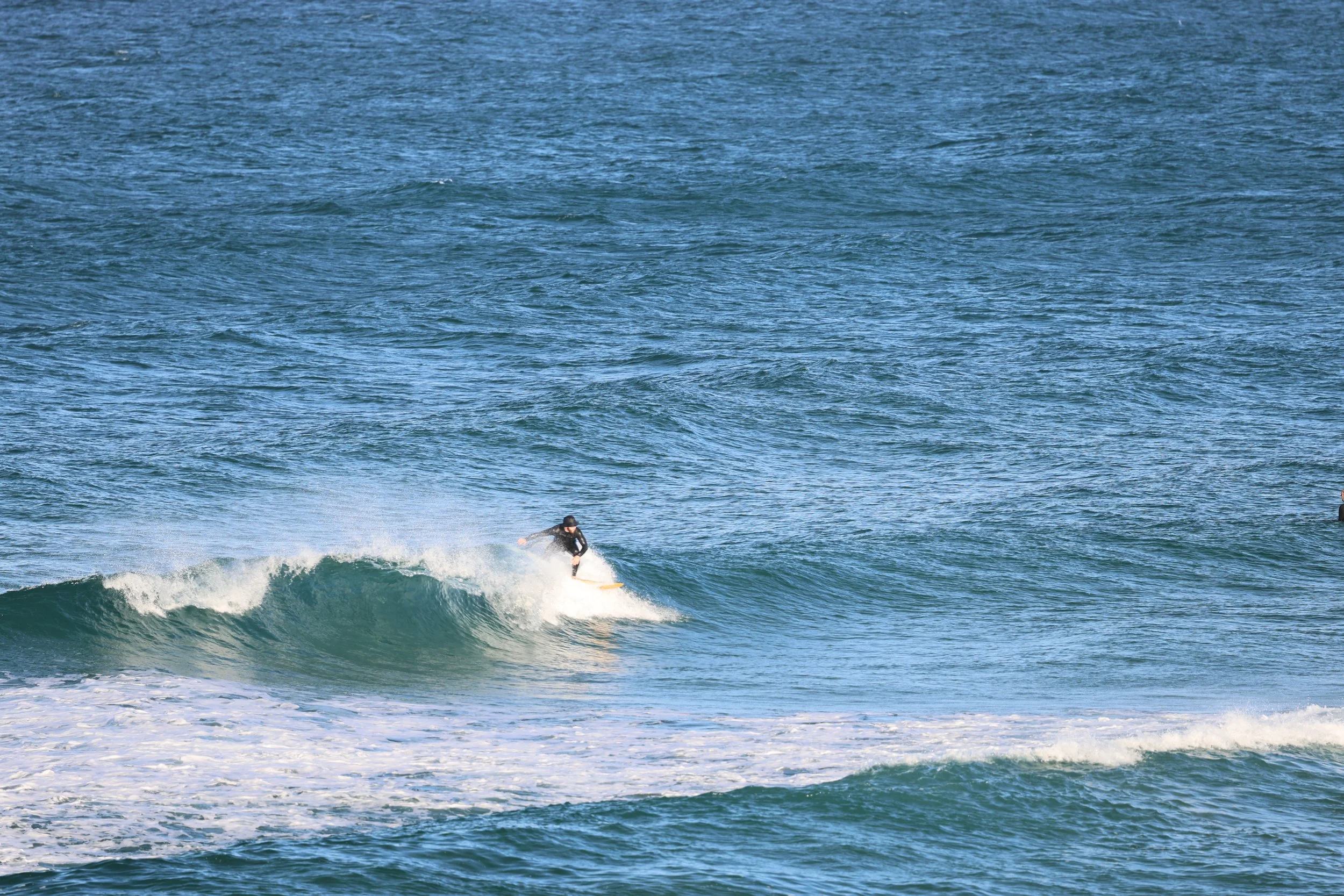

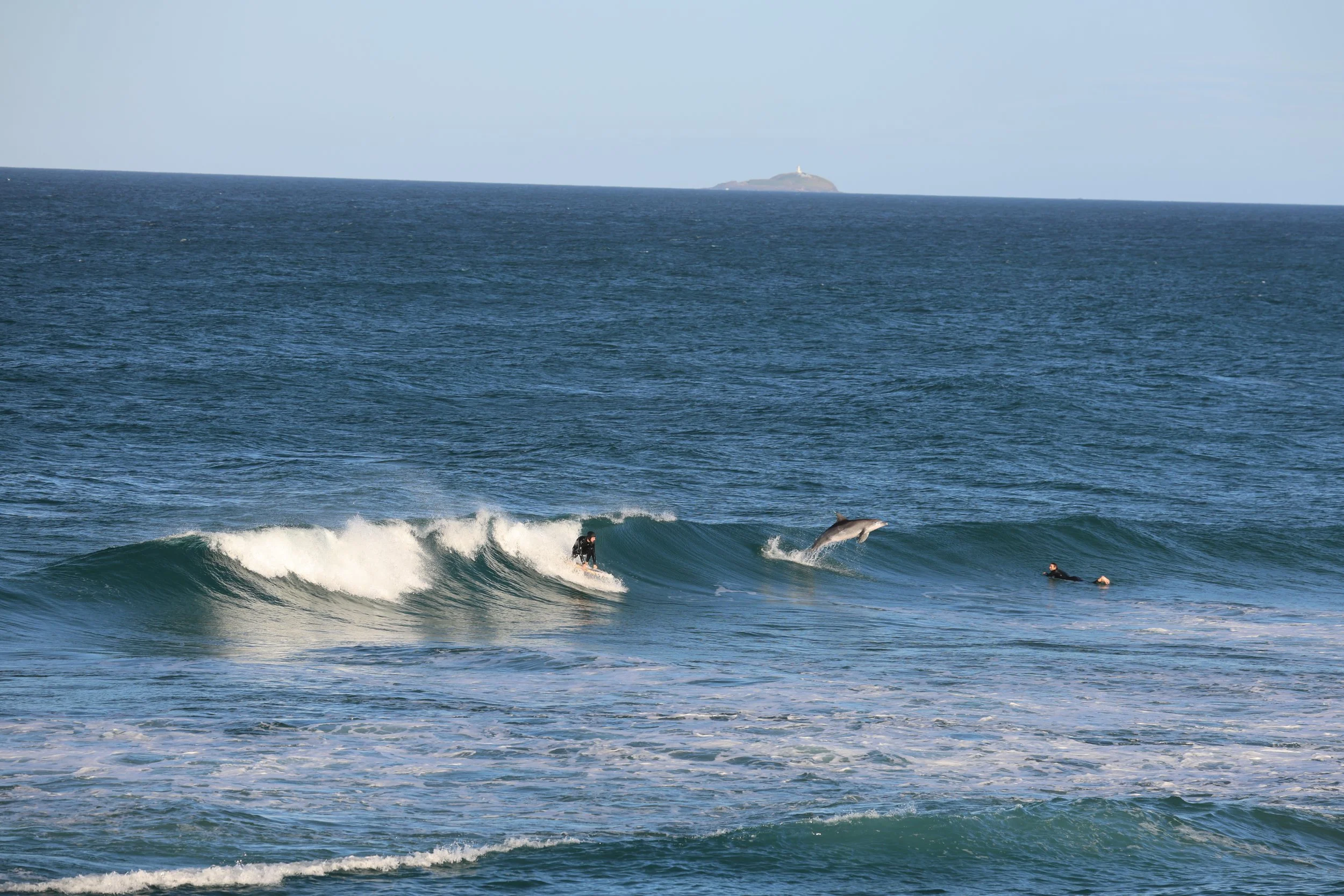
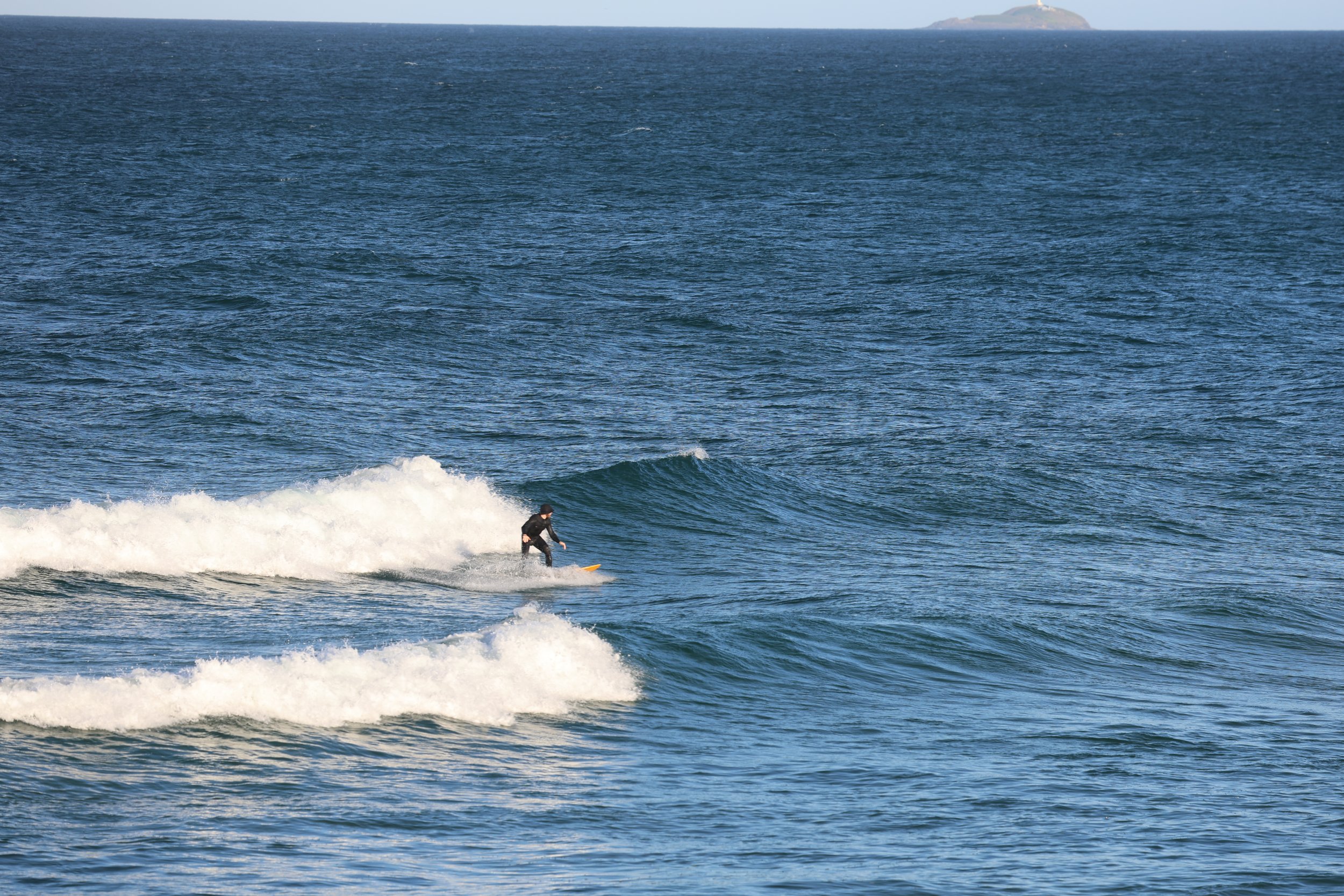
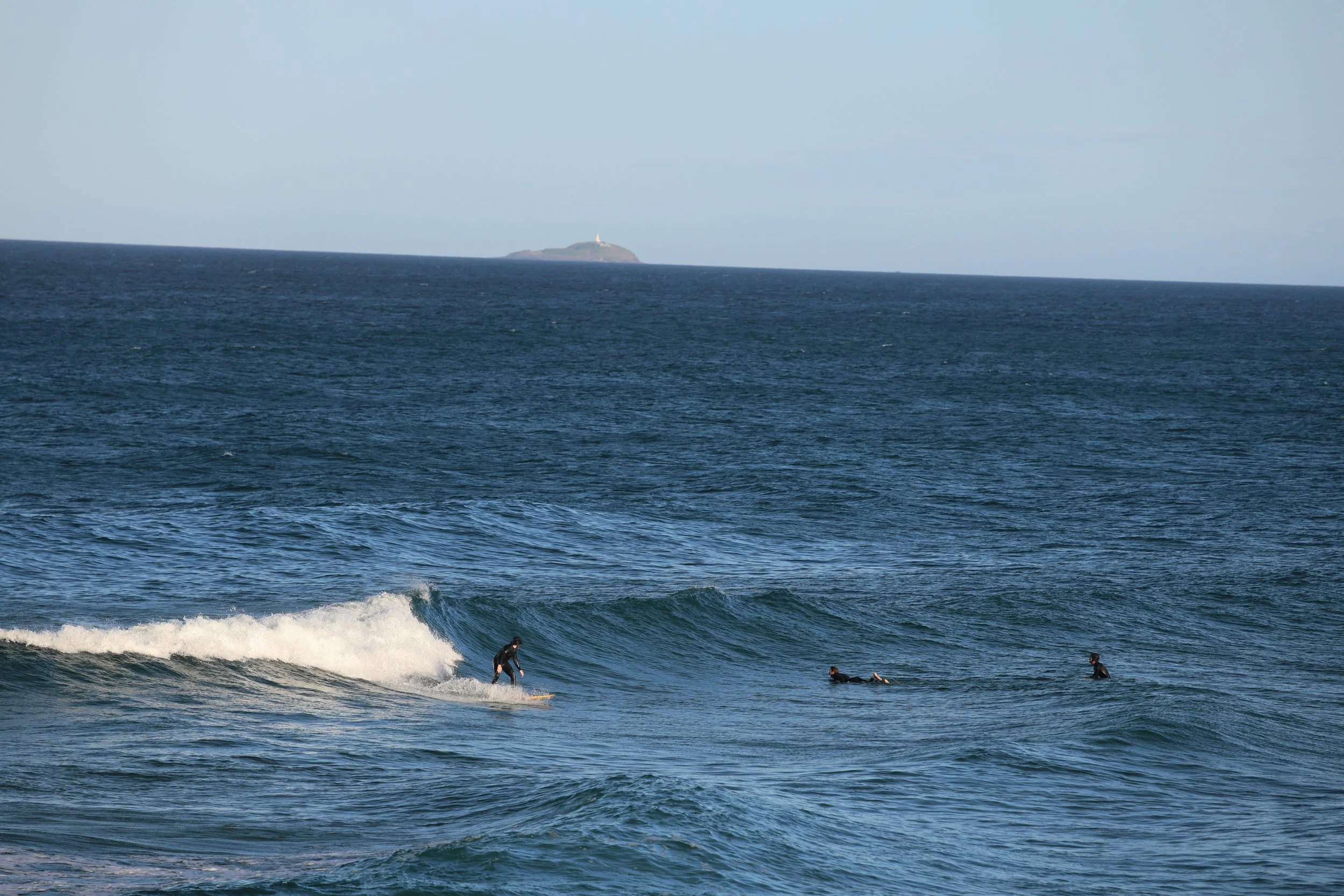
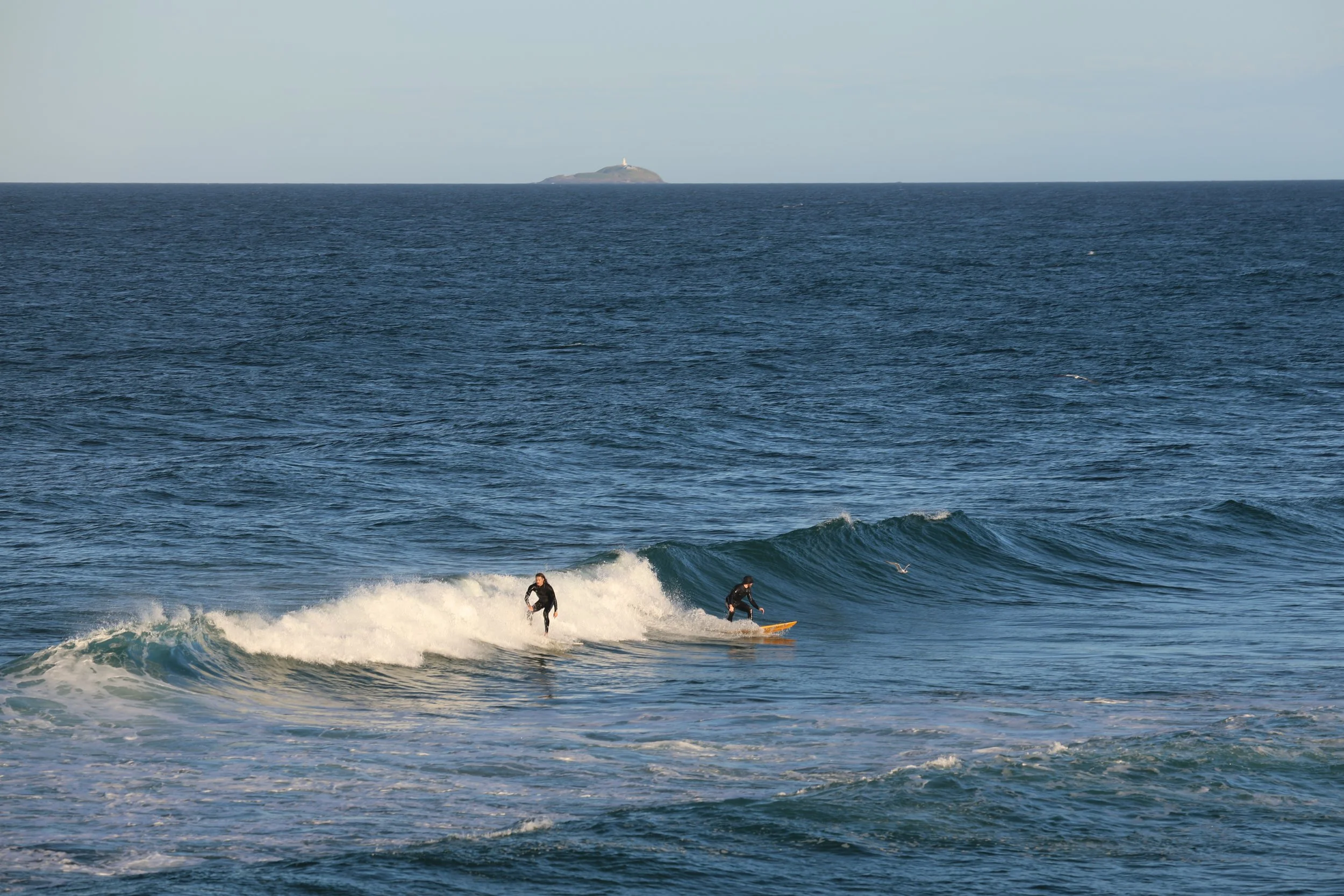
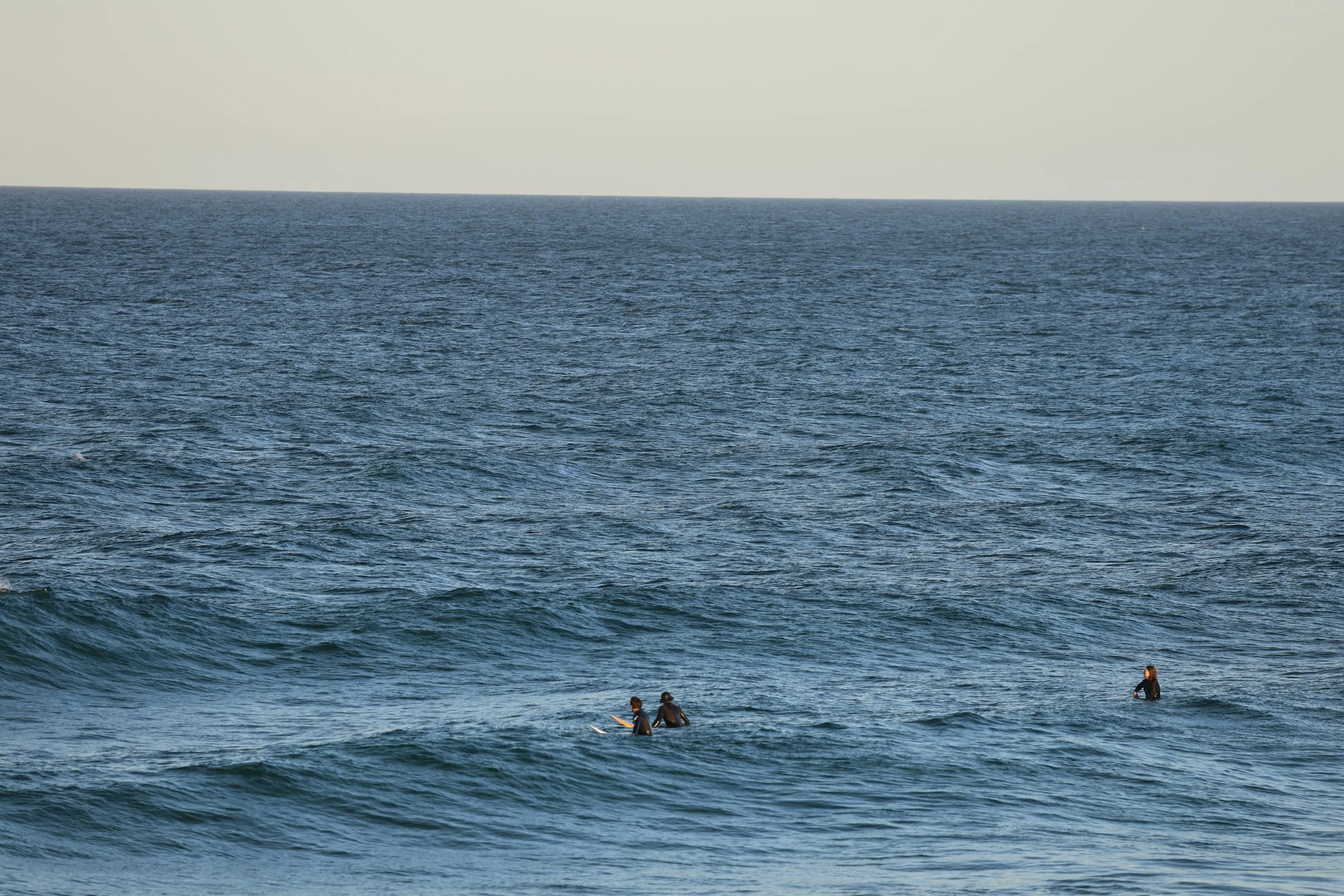
Further info
See more at: visitnsw.com.
Useful links: Surfline’s Northern NSW travel guide, Perfect Wave Travel’s NSW surf travel guide.
Short films: The (Un) Lucky Country….
Related reading:
- Surf Odyssey - The Culture of Wave Riding, Gestalten
- The Surf Atlas, Gestalten
- Barbarian Days - A Surfing Life, William Finnegan
- Surf Is Where You Find It, Jerry Lopez
Continue exploring
Surf
13 Oct 2023